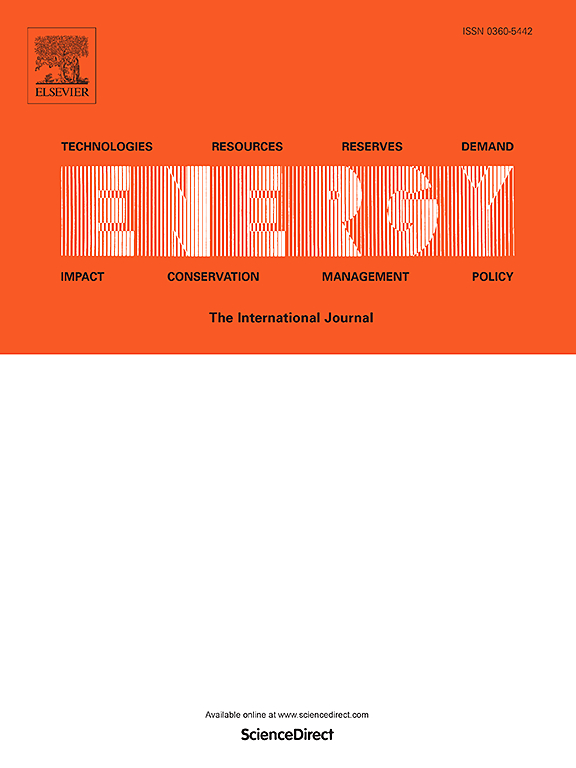Innovative valorization of waste tire by integrating pyrolysis with Steam Rankine Cycle, multi-generation, and desalination: Novel process design, simulation and comprehensive analysis
IF 9
1区 工程技术
Q1 ENERGY & FUELS
引用次数: 0
Abstract
Waste tire pyrolysis has gained attention as a promising solution for the sustainable management of discarded tires, yet existing designs often overlook efficient exhaust gas treatment and waste heat recovery. To fill this gap, this study designed and simulated an integrated process using Aspen Plus combining waste tire pyrolysis with combined cooling, heat, and power, a Steam Rankine Cycle (SRC), desalination, and monoethanolamine (MEA)-based carbon capture system. The results indicate that the energy efficiency and exergy efficiency of the process are 48.76% and 51.5%, respectively. The techno-economic analysis suggests that government agencies should provide subsidies of at least 38.43 $/ton of waste to achieve positive net present value. Additionally, it is possible to increase the selling price of pyrolysis oil to 0.488 $/kg or reduce the purchase price of waste tires or hydrogen to 0.077 $/kg, 1.591$/kg, respectively, for the proposed process to achieve positive returns within 20 years. These findings demonstrate the potential of the proposed system to enhance both the energy utilization and economic viability of waste tire pyrolysis.
求助全文
约1分钟内获得全文
求助全文
来源期刊

Energy
工程技术-能源与燃料
CiteScore
15.30
自引率
14.40%
发文量
0
审稿时长
14.2 weeks
期刊介绍:
Energy is a multidisciplinary, international journal that publishes research and analysis in the field of energy engineering. Our aim is to become a leading peer-reviewed platform and a trusted source of information for energy-related topics.
The journal covers a range of areas including mechanical engineering, thermal sciences, and energy analysis. We are particularly interested in research on energy modelling, prediction, integrated energy systems, planning, and management.
Additionally, we welcome papers on energy conservation, efficiency, biomass and bioenergy, renewable energy, electricity supply and demand, energy storage, buildings, and economic and policy issues. These topics should align with our broader multidisciplinary focus.
 求助内容:
求助内容: 应助结果提醒方式:
应助结果提醒方式:


